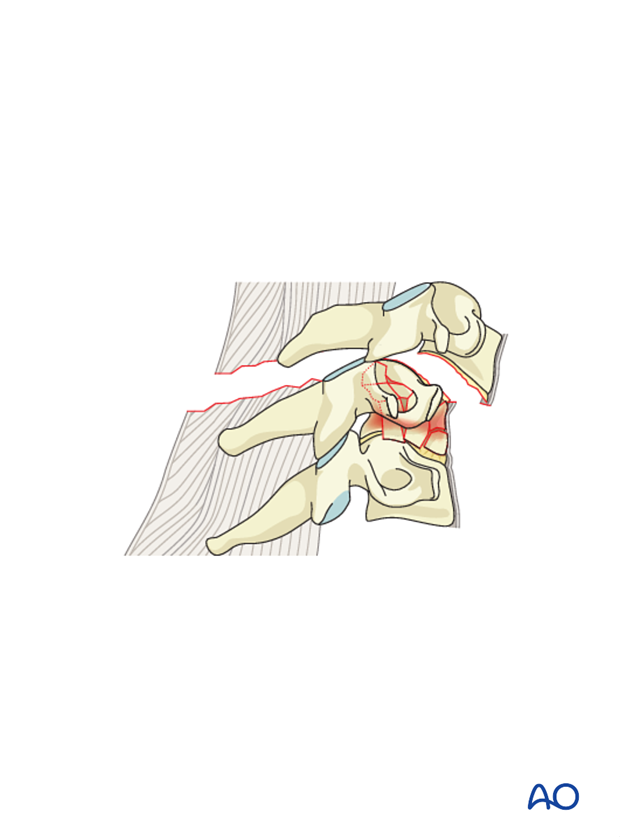AO Spine subaxial cervical spine injury classification system
1. Preliminary remarks
The classification system described here exists in order to provide surgeons from different institutions with a common language to discuss various injuries. It provides consistency in injury diagnosis and treatment.
The AOSpine subaxial cervical spine fracture classification system aims to achieve international acceptance.
The classification system describes injuries based on four criteria:
- morphology of the injury
- facet injury
- neurologic status
- case-specific modifiers
Each criterion is described below. Injuries are described by their level, followed by the morphologic type of the primary injury. The secondary injuries and modifiers are placed in parentheses (facet injury, neurologic status, and case specific modifiers).
2. Morphology of the injury
Three basic categories (Types) were used in a similar manner to the AO thoracolumbar fracture classification system to describe primary injury morphology.
Type A injuries are fractures that result in compression of the vertebra with intact tension band.
Type B injuries include failure of the posterior or anterior tension band through distraction with physical separation of the subaxial spinal elements while maintaining continuity of the alignment of the spinal axis without translation or dislocation.
Type C includes those injuries with displacement or translation of one vertebral body relative to another in any direction; anterior, posterior, lateral translation, or vertical distraction.
Injuries are first classified by their level and either C, B, or A in this order.
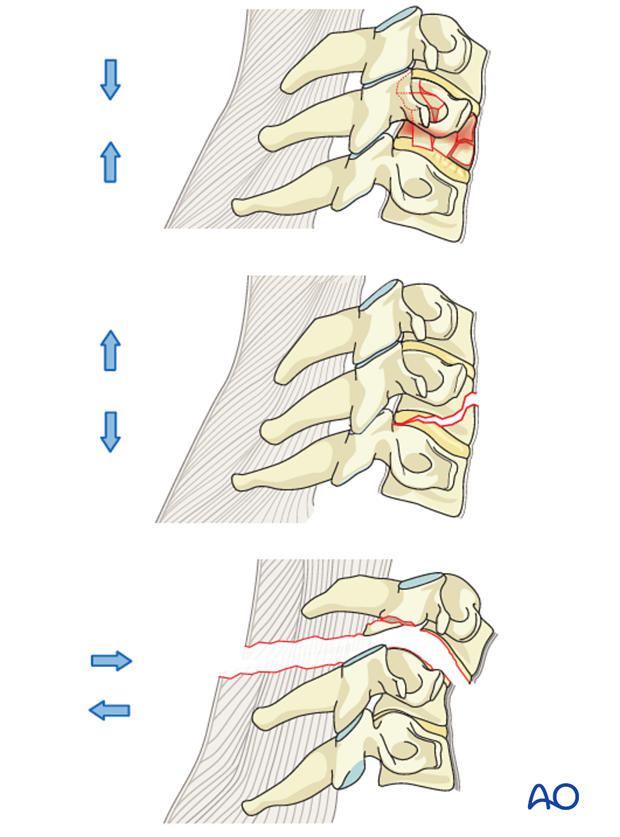
3. A0
Type A0 is used to describe insignificant fractures not affecting the spinal stability in a significant way, such as an isolated fracture of the spinous process, the transverse process or the lamina.
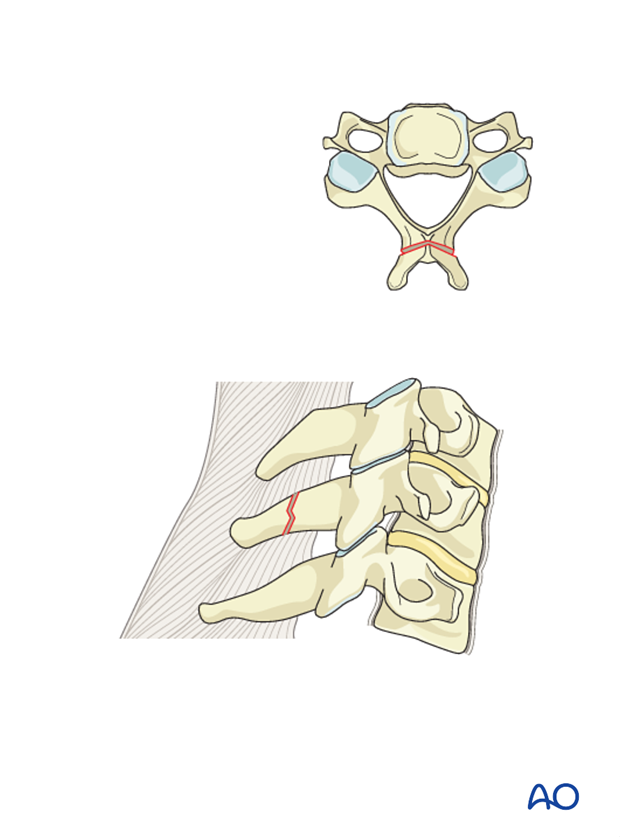
This CT shows a sagittal reconstruction of an isolated spinous process fracture.
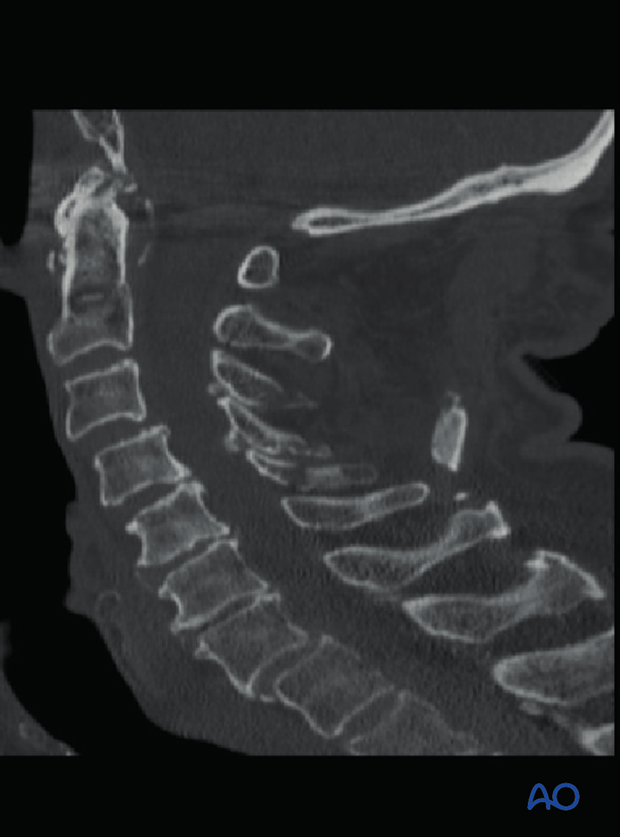
This CT shows a transverse image of the same injury.
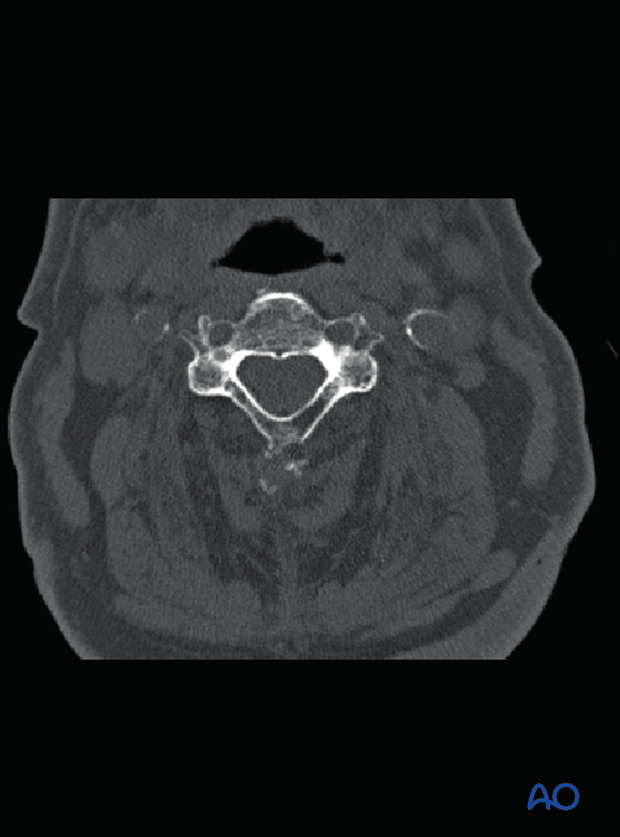
4. A1
Type A1 injuries are compression fractures involving a single endplate without involvement of the posterior wall of the vertebral body
Caution: If this fracture is seen at the cervicothoracic junction, it is likely that this is part of a type B or type C injury.
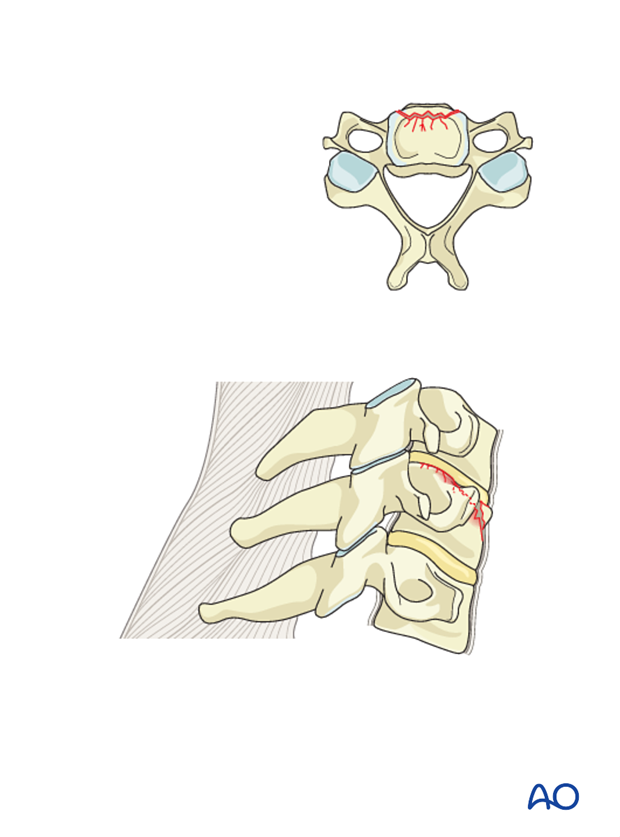
This CT show a sagittal reconstruction of a C7 superior endplate A1 fracture.
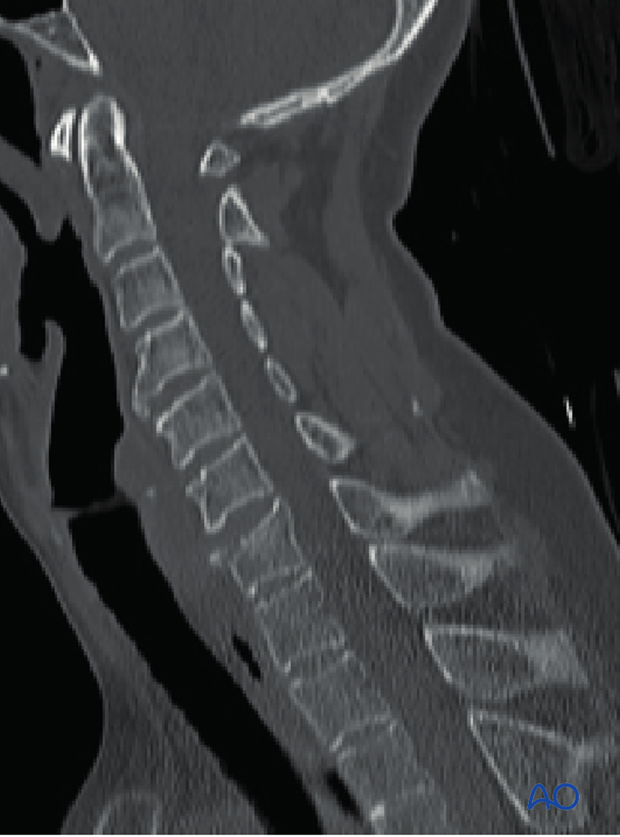
5. A2
A-type injuries are in general a failure of anterior structures under compression with intact tension band.
Type A2 is a coronal split or pincer fracture involving both endplates without involvement of the posterior wall of the vertebral body.
Caution: If this fracture is seen at the cervicothoracic junction, it is likely that this is part of a type B or type C injury.
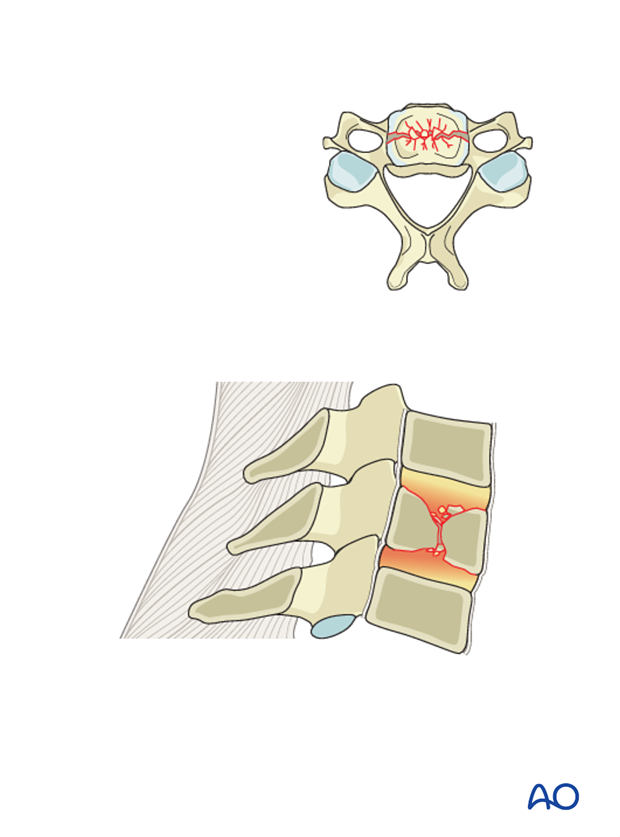
This CT show a sagittal reconstruction of a C3 type A2 fracture.
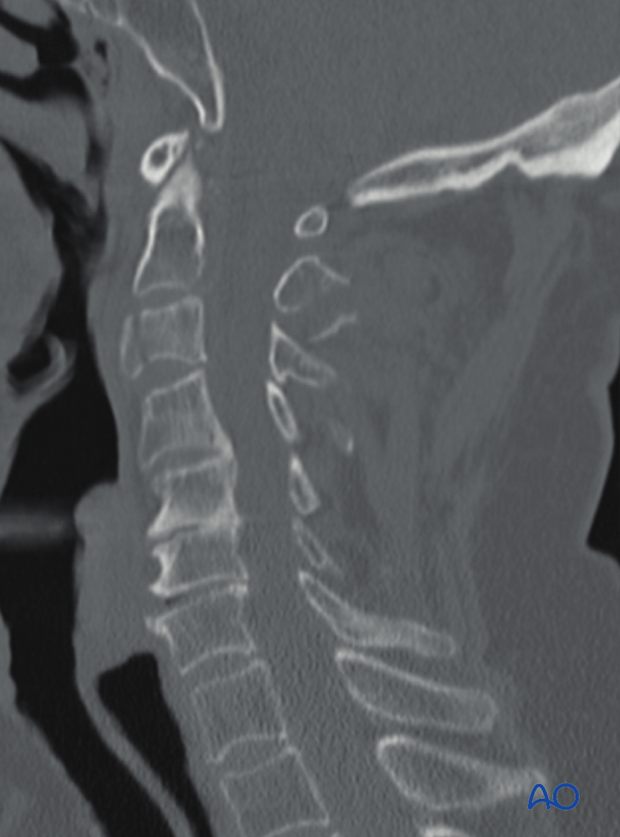
6. A3
A-type injuries are in general a failure of anterior structures under compression with intact tension band.
Type A3 is a burst fracture involving a single endplate (superior or inferior) with involvement of the posterior vertebral wall.
Caution: If this fracture is seen at the cervicothoracic junction, it is likely that this is part of a type B or type C injury.
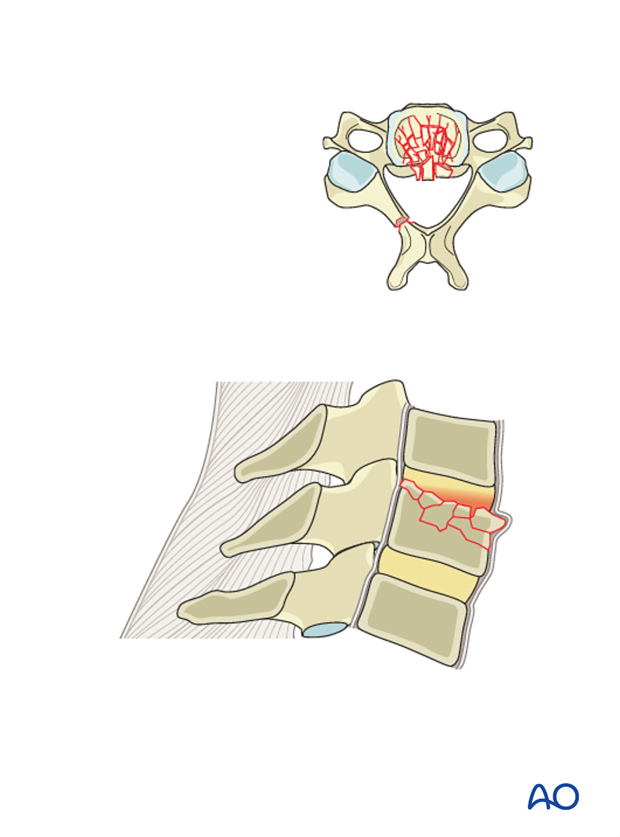
This CT show a sagittal reconstruction of a C7 burst A3 fracture.
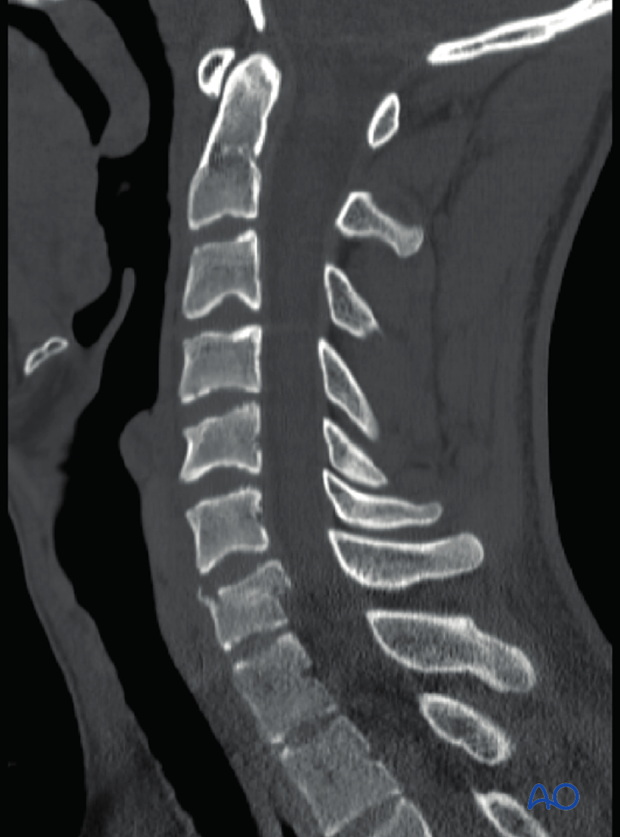
7. A4
A-type injuries are in general a failure of anterior structures under compression with intact tension band.
Type A4 is a burst fracture or sagittal split injury involving both endplates.
These injuries are similar to A3 injuries but involve both endplates. Fractures that split the vertebral body in the sagittal plane involving the posterior vertebral wall are also included in this group.
Caution: If this fracture is seen at the cervicothoracic junction, it is likely that this is part of a type B or type C injury.
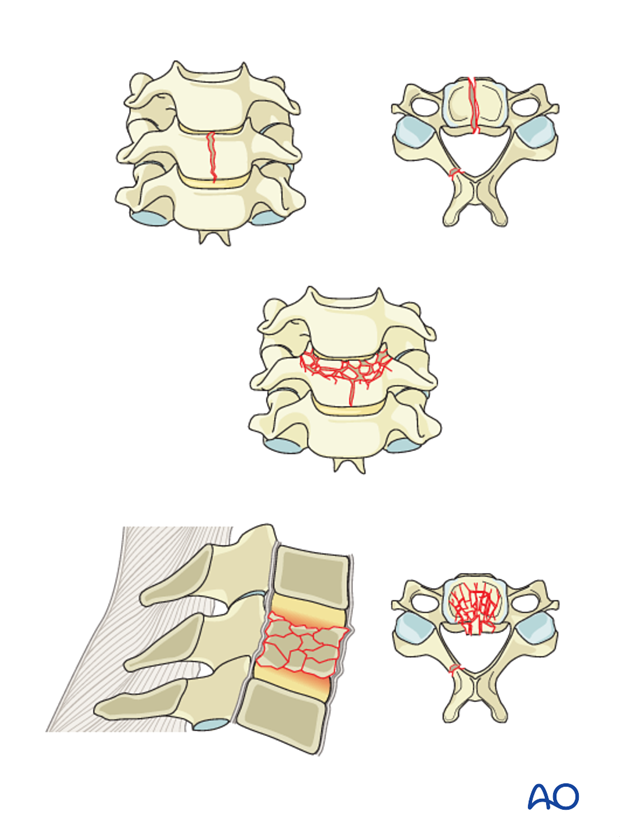
This CT show a sagittal reconstruction of a C7 burst A4 fracture.
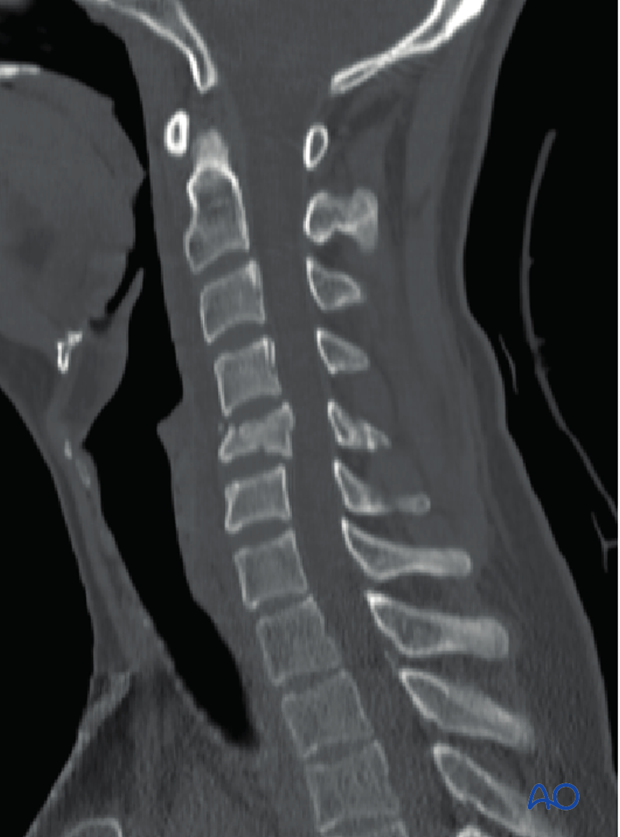
8. B1
B-type injuries are in general a failure of the posterior or anterior tension band.
Type B1 is a posterior tension band injury where the fracture line only goes through the bony structure.
In the cervical spine this is a very uncommon injury.
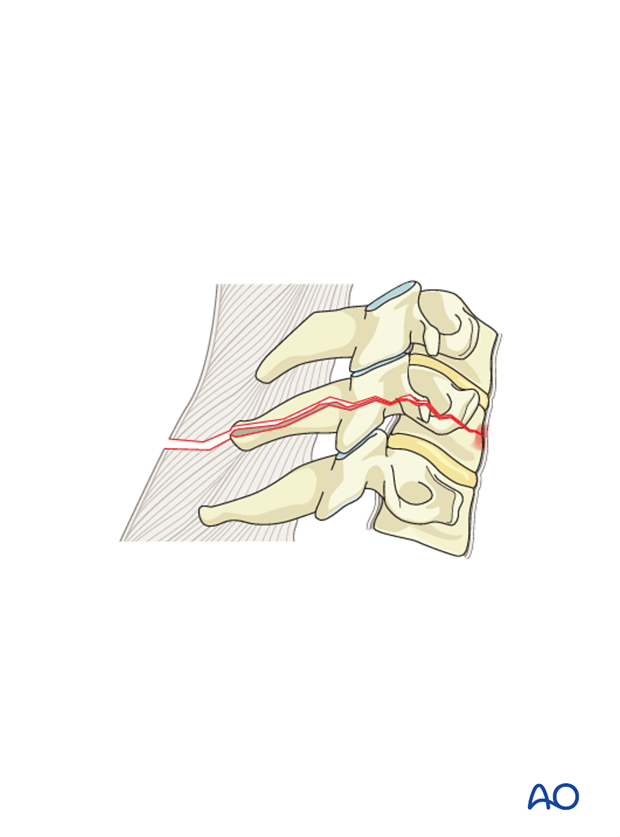
9. B2
Type B2 is a complete disruption of the posterior capsuloligamentous or bony capsuloligamentous structures together with a vertebral body, disk, and/or facet injury.
B-type injuries are in general a failure of the posterior or anterior tension band.
Combine with Type A fracture type and facet type injury classification when appropriate.
This always involves a motion segment and should be called an injury of eg. C5/C6.
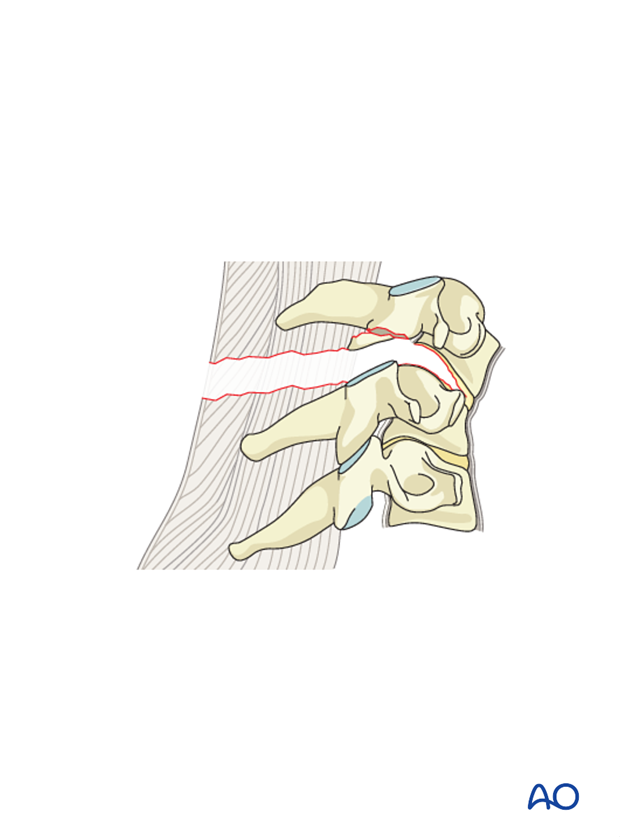
This CT show a sagittal reconstruction of a C7/T1 ligamentous B2 injury without a fracture.
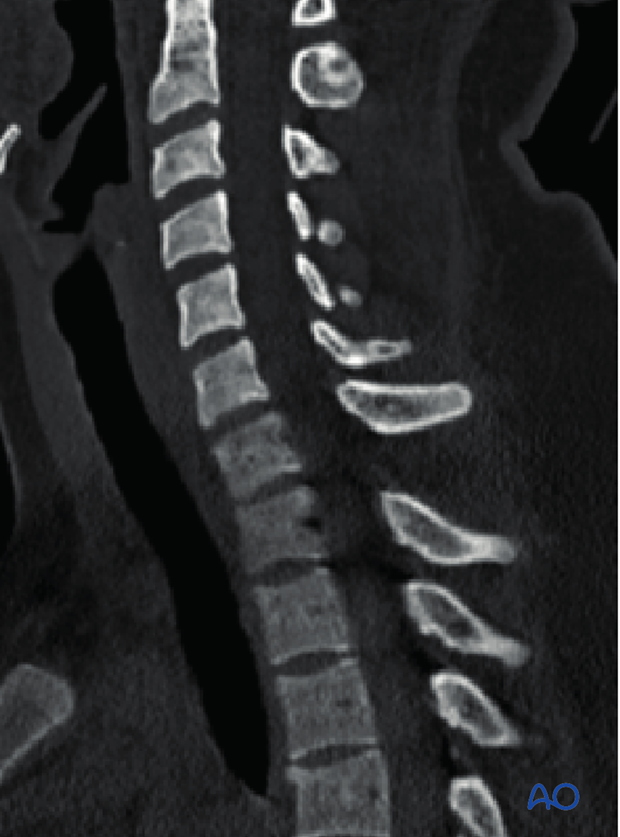
10. B3
Type B3 is an anterior tension band injury.
B-type injuries are in general a failure of the posterior or anterior tension band.
There is physical disruption or separation of the anterior structures (bone/disk) with tethering of the posterior elements.
These injuries may pass through either the intervertebral disk or through the vertebral body itself (as in the ankylosed spine). An intact posterior hinge will prevent gross displacement
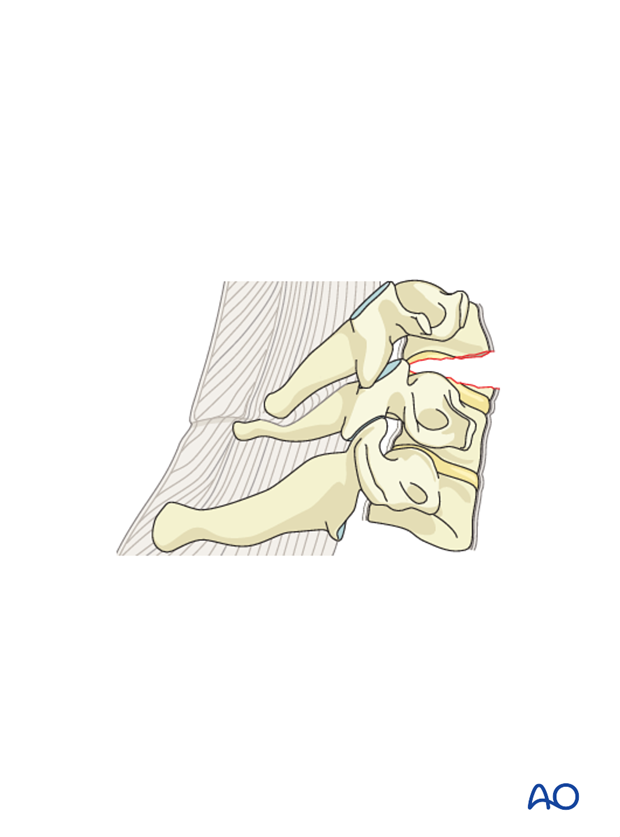
This CT show a sagittal reconstruction of an C5/C5 ligamentous B3 injury.

11. C
C-type injuries are in general failure of anterior and posterior elements leading to displacement
This category includes injuries with displacement or translation of one vertebral body relative to another in any direction.
Any associated injury (either a Type A or facet injury) should be specified separately as a subtype, after designation as a Type C injury.
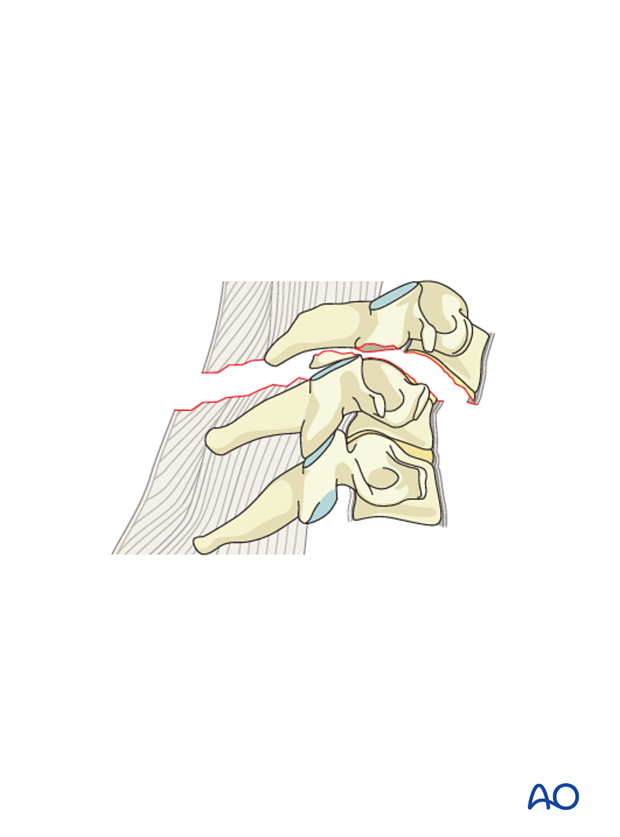
This CT show a sagittal reconstruction of a C7/T1 type C injury.
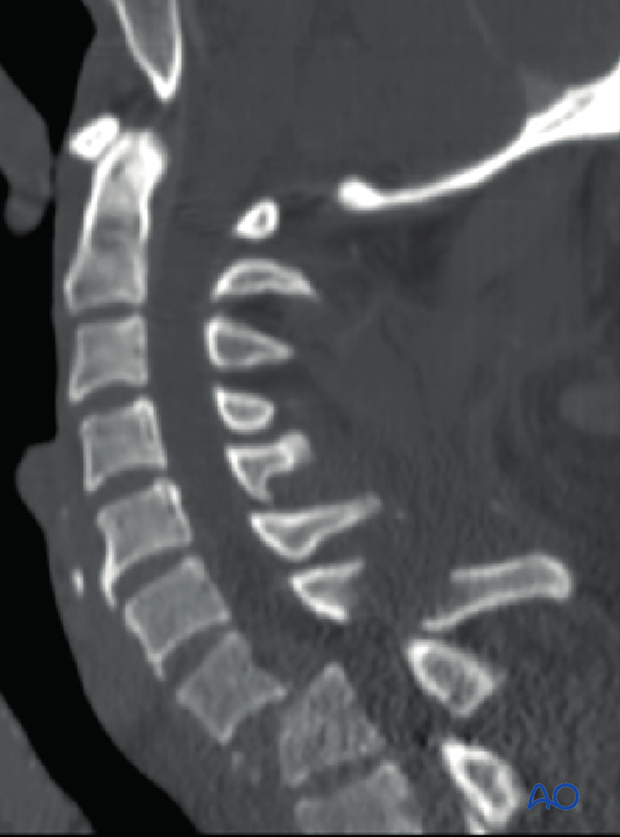
12. Facet injury
A series of descriptors describes the spectrum of injuries to the facet joint complex.
If there are multiple injuries to the same facet (for example, a small fracture and dislocation), only the highest level of injury is classified (dislocation).
If both facets on the same vertebrae are injured, the right-sided facet injury is listed before the left sided injury if the injuries are of different subcategories.
The ‘‘Bilateral’’ (BL) modifier is used if both facets have the same type of injury.
If only facet injuries are identified (no A, B, or C injury), they are listed first after the level of injury.
F1 Non displaced facet fracture
F1 is a non-displaced facet fracture (either superior or inferior facets). Fracture fragments are smaller than 1 cm and comprise less than 40% of the lateral mass.
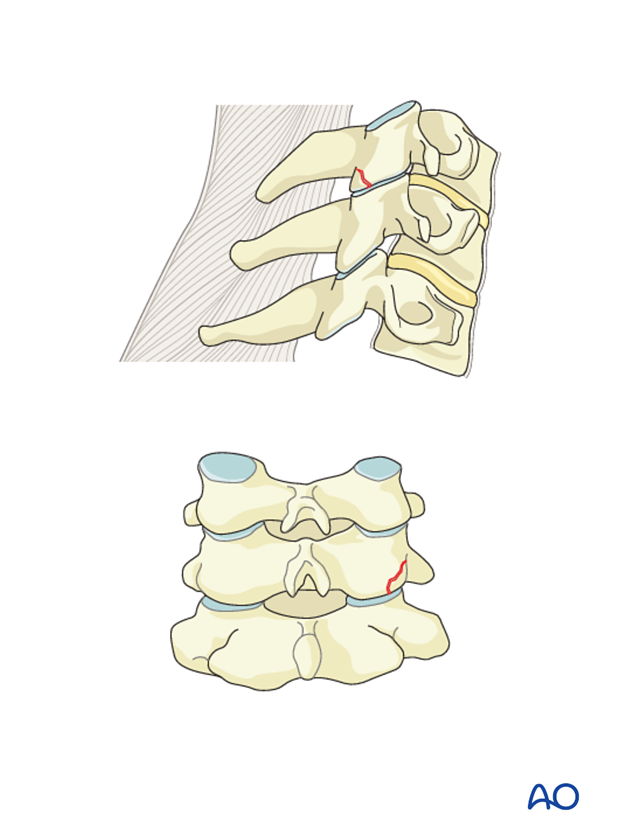
F2 facet fracture with potential for instability (either superior or inferior facets)
F2 is a facet fracture with potential for instability (either superior or inferior facets).
Fracture fragments are either larger than 1 cm, comprise more than 40% of the lateral mass, or there are signs of displacement.
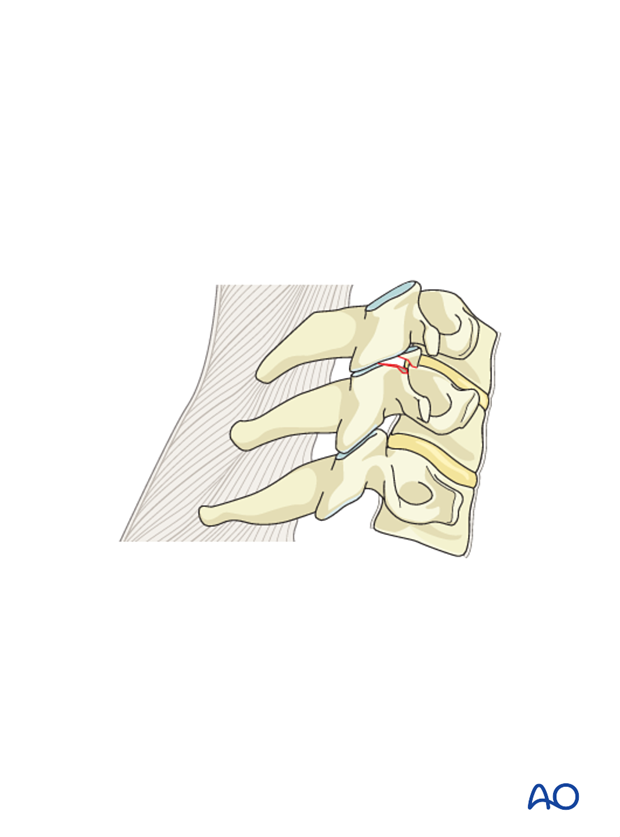
This CT show a sagittal reconstruction of a facet fracture C5/C6 (F2).
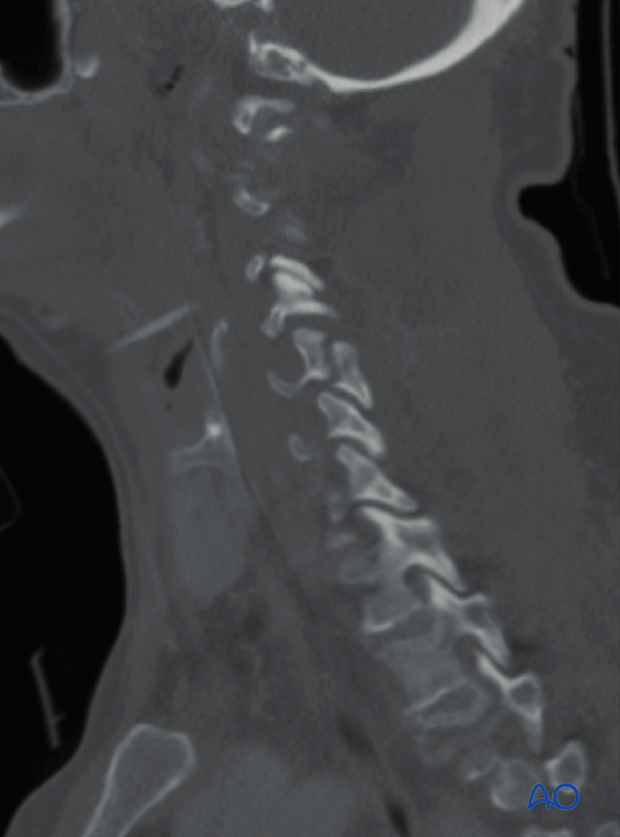
F3 Floating lateral mass
F3 is a disruption of the pedicle and lamina resulting in disconnection of superior and inferior articular processes at a given level or set of levels.
This might lead to instability of the facet joint of two motion segments.
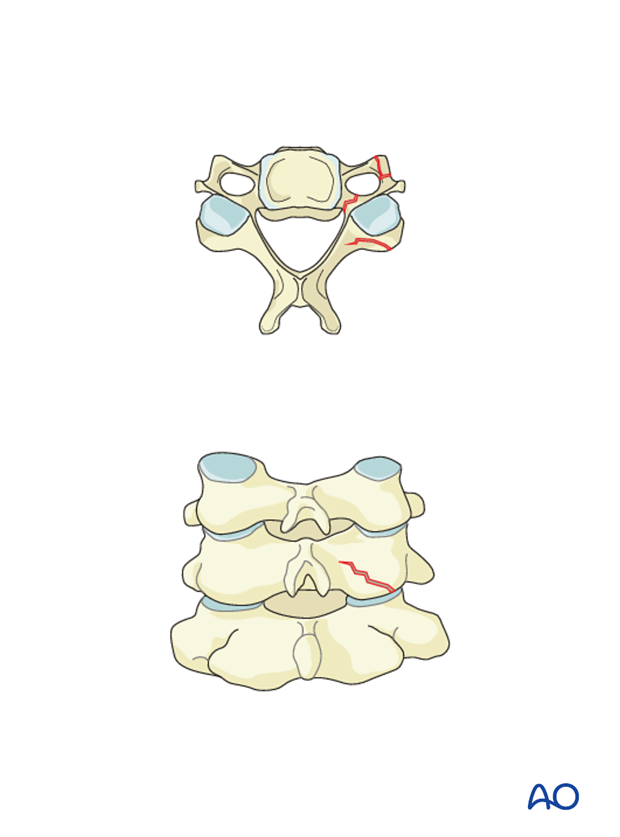
This CT shows a transverse image of a lateral mass fracture at the level of C5 (F3).
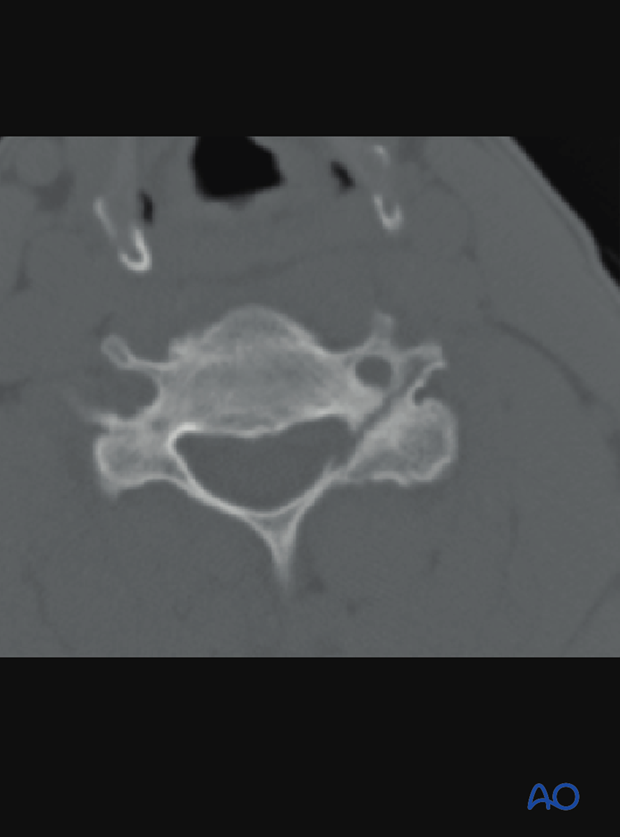
F4 Pathologic subluxation or perched/dislocated facet
This injury type includes any subluxation or dislocation of the facet joint, with or without fracture.
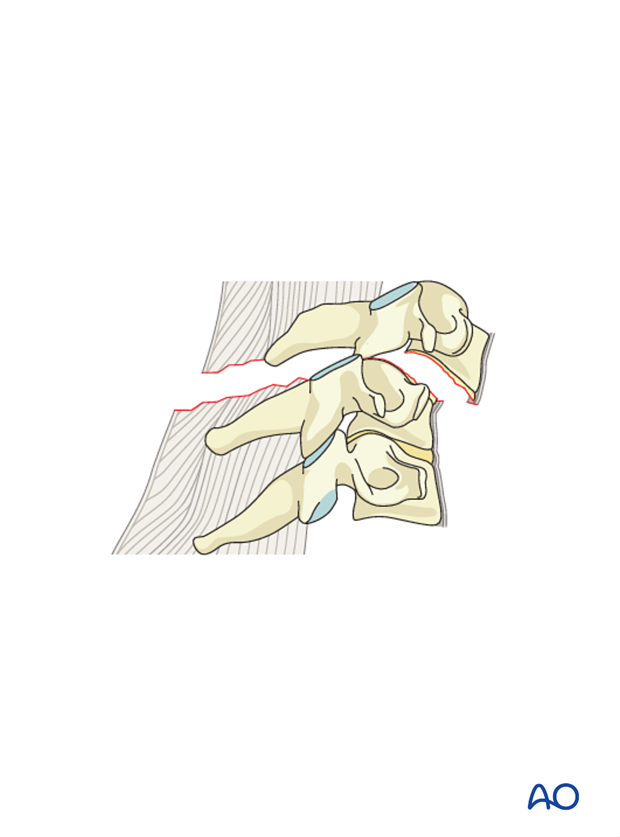
This CT shows a sagittal reconstruction of a dislocated and locked facet at C7/T1 (F4).
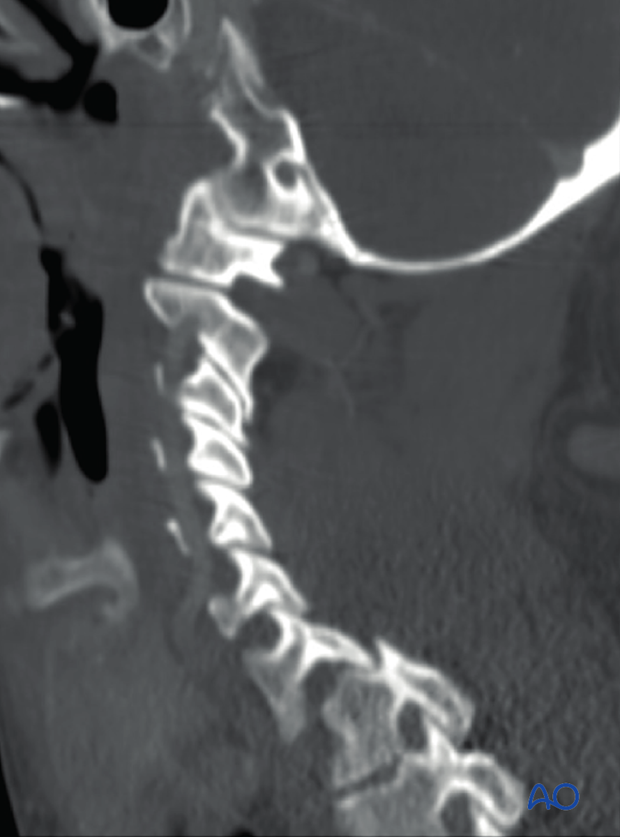
BL — Bilateral
The bilateral modifier is used when the same type of facet injury is observed bilaterally on the same vertebra.
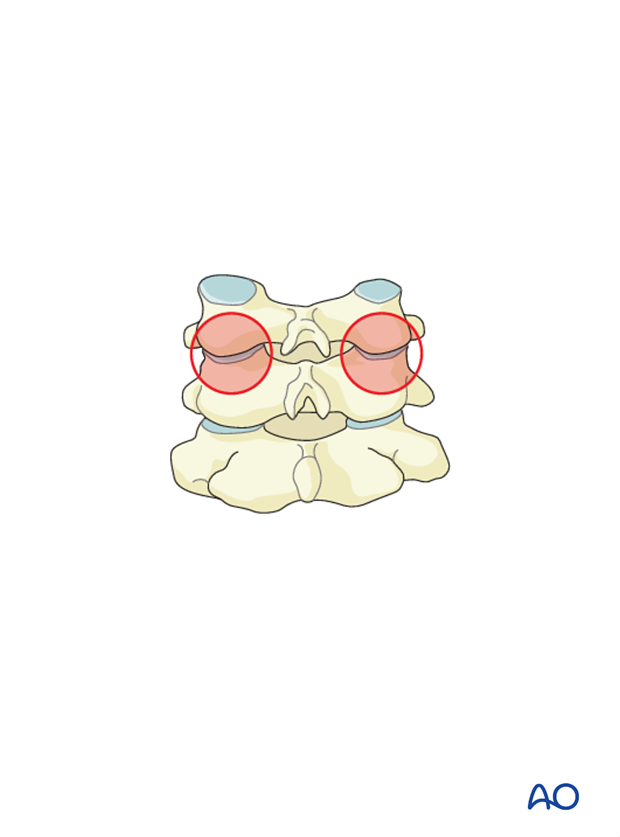
13. Neurology
Neurological status is graded according to a six-part system similar to the system described with the TL classification:
- N0: neurologically intact
- N1: transient neurologic deficit that has completely resolved by the time of clinical examination (usually within 24 h from the time of injury)
- N2: radiculopathy
- N3: incomplete spinal cord injury
- N4: complete spinal cord injury
- NX: neurology undetermined (used to designate patients who cannot be examined due to head injury or another condition which limits their ability to complete a neurological examination such as intoxication, multiple trauma, or intubation/sedation).
There is one difference with the system used in the TL classification:
‘‘+’’ is given in the case of ongoing cord compression in setting of incomplete neurologic deficit or nerve injury.
14. Case specific modifiers
The case specific modifiers describe unique conditions relevant to clinical decision making.
M1 PLC injury suspected
This modifier designates injuries, which may appear stable from a bony standpoint, but there is some evidence of injury to the posterior ligamentous complex (PLC) without complete disruption. This is often identified on MRI imaging and associated with very localized posterior tenderness on clinical examination.
This CT reconstruction does not show any fracture.

The MRI of the same patient shows sign of posterior ligamentous injury.
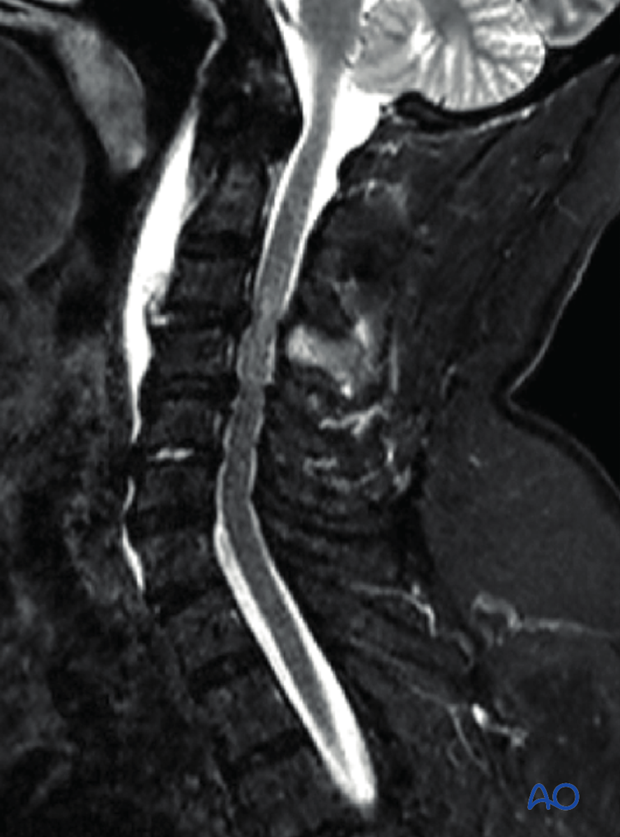
M2 Critical disk herniation
M2—Critical disk herniation defined by tissue signal intensity that is consistent with nucleus pulposus protruding posteriorly to a vertical line drawn along the posterior border of the inferior vertebral body at the injured level.
In this case a C type injury is seen on a CT reconstruction.
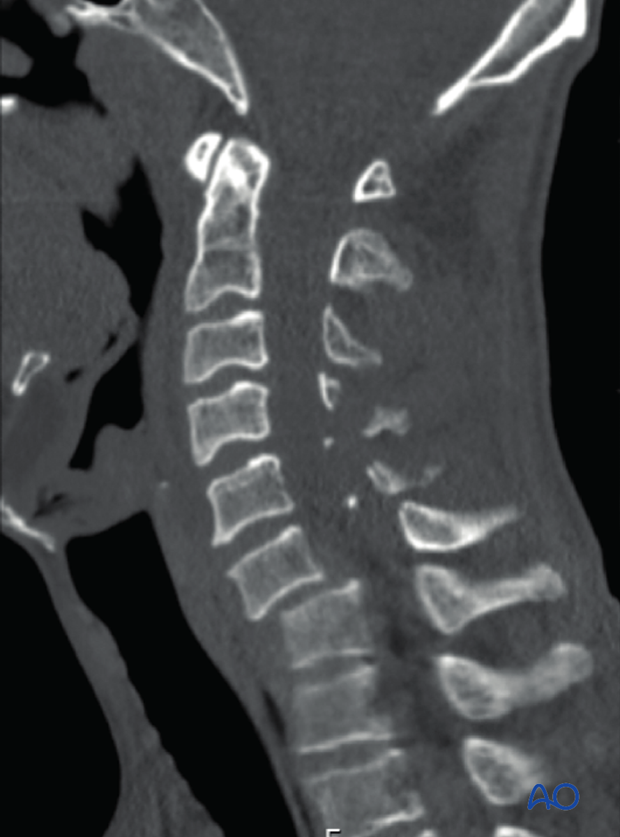
After reduction MRI shows massive disk herniation. This might influence the decision on treatment approach.
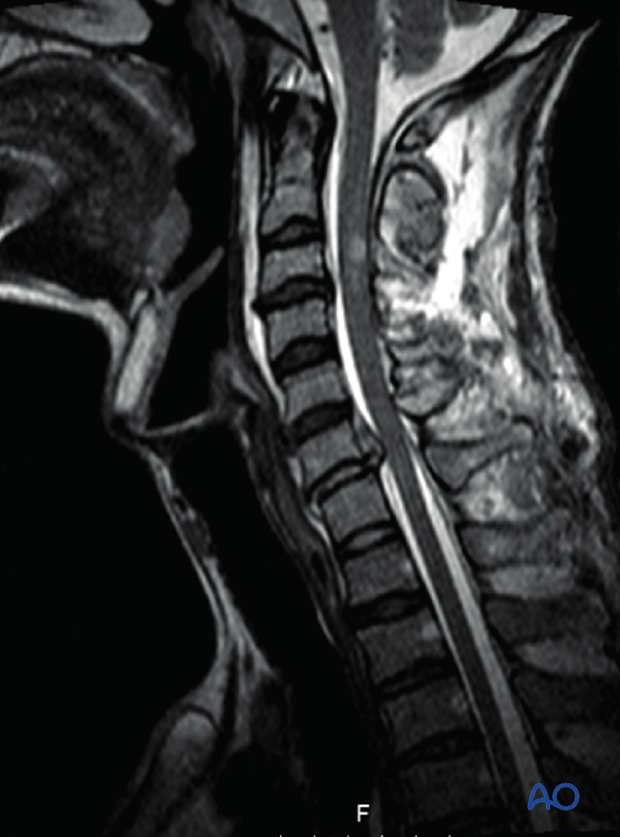
M3 Stiff spine
M3—Stiffening/metabolic bone disease [i.e., Diffuse Idiopathic Skeletal Hyperostosis (DISH), Ankylosing Spondylitis (AS), Ossification of the Posterior Longitudinal Ligament (OPLL) or Ossification of the Ligamentum Flavum (OLF)]. This modifier describes conditions that may argue either for or against surgery for those patients.
This is a B3 type injury in a patient with DISH. These injuries are highly unstable.
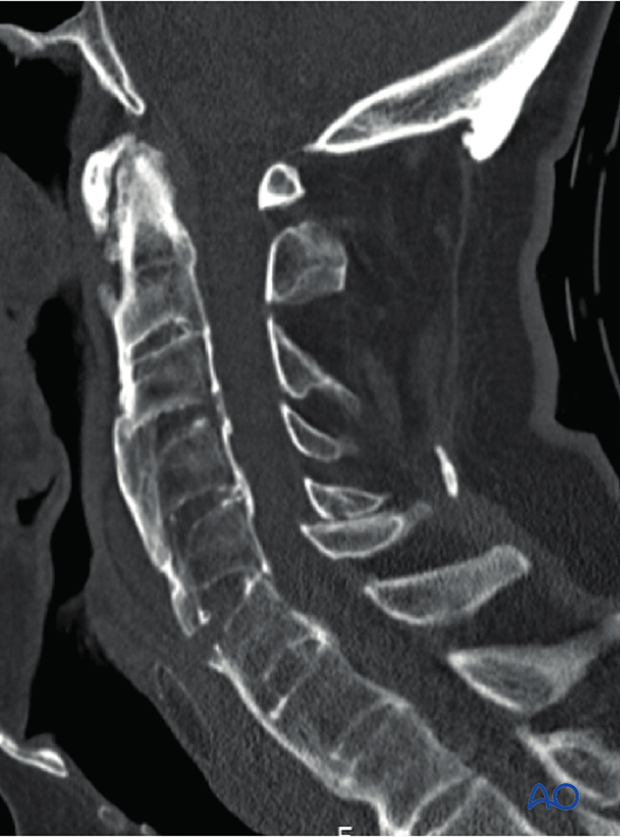
This is a type C type injury in a patient with ankylosing spondylitis.
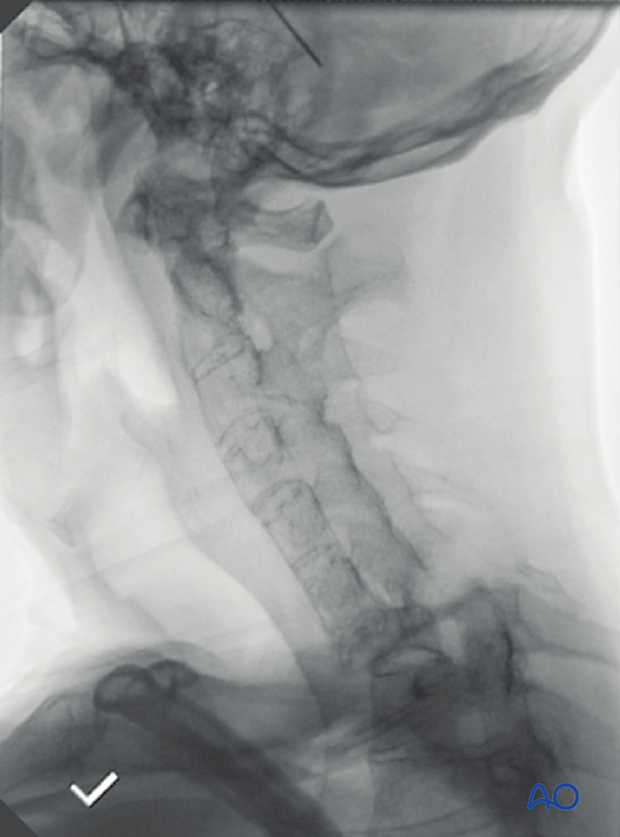
M4—Signs of vertebral artery injury.
Disruption or dissection of the vertebra artery may influence the decision making for treatment.
This CT angiogram shows disruption of the vertebral artery flow on the left side.
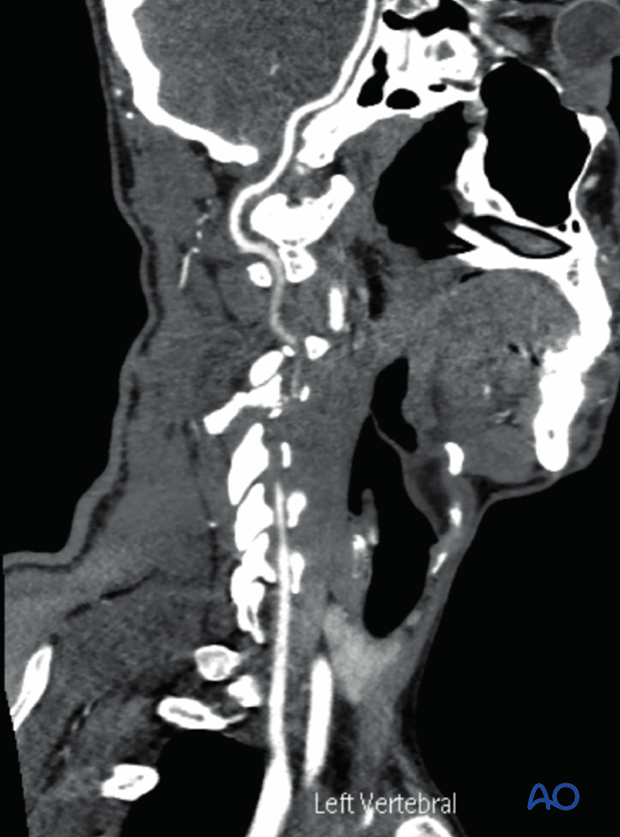
This angiogram shows a vertebral artery dissection.
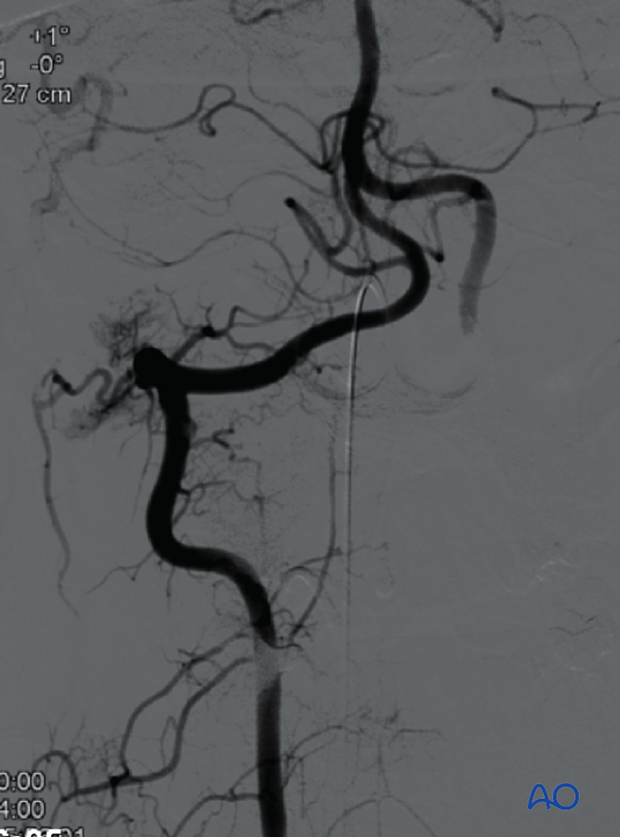
15. Nomenclature
To build up the complete classification, the following step by step approach is used.
- Start with (sub)types A, B or C
- B and C always segment (i.e. C4-C5)
- In B or C combine with the description of vertebral body fracture:
- C4-C5: B2 (C5: A4)
- Add facet description. First right, then left side.
- C4-C5: B2 (C5: A4, F2, F4)
- Add neurology
- C4-C5: B2 (C5: A4; F2, F4; N3)
- Add modifier if necessary
- C4-C5: B2 (C5: A4; F2, F4; N3; M2)
Example 1
C5-C6: B2 (A0; F4 BL; N3)
Posterior tension band injury without vertebral body fracture and subluxation of the facet joint bilaterally with incomplete spinal cord injury.
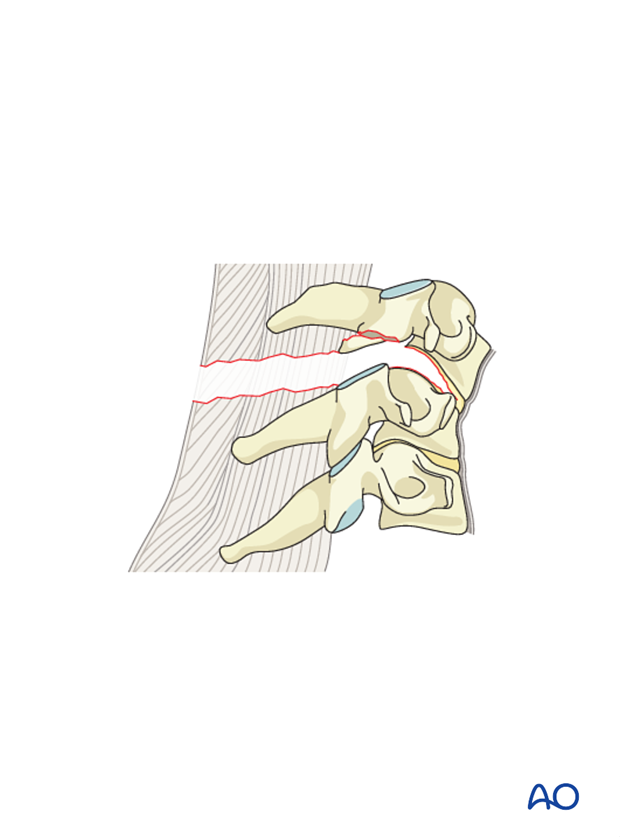
Example 2
C5-C6: C (C6:A4; F4 BL; N4)
Fracture dislocation C5-C6 (C) with a complete burst fracture of C6, bilateral facet dislocations, and complete tetraplegia.
